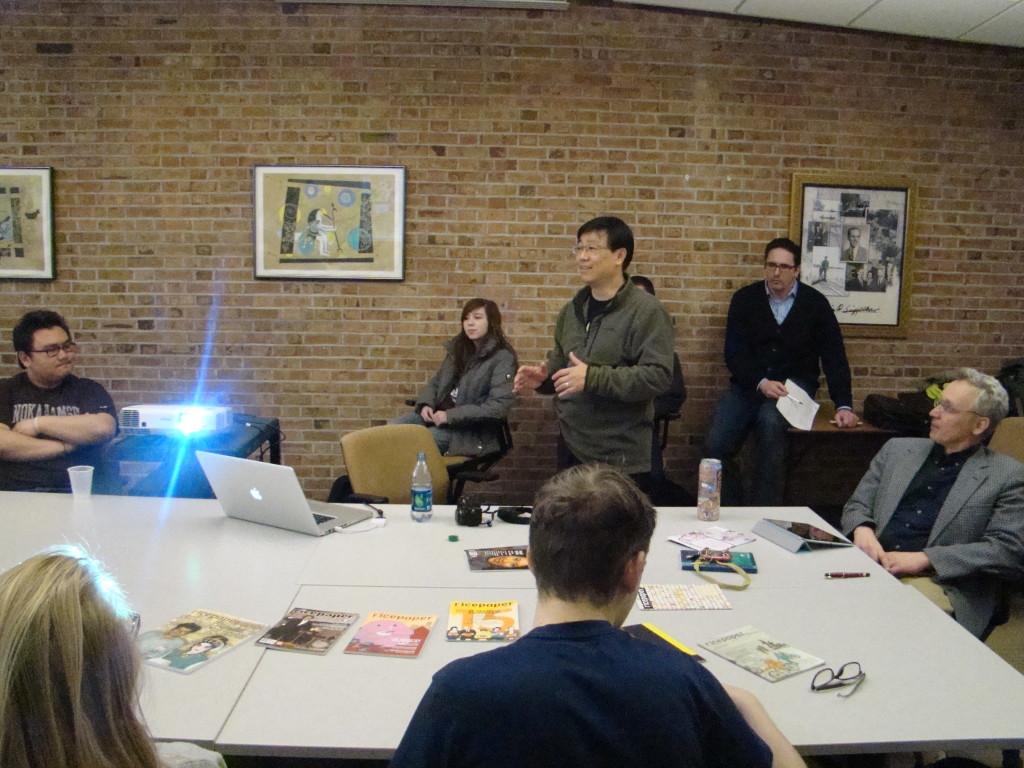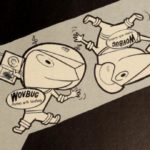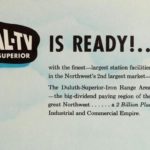Publishing Conference that Was Rescheduled and Rearranged
Architect, author or urban ecologist David Wong of Vancouver BC extended his stay through Monday.
At 9:00, David addressed students in my “Research Methods” course on the complexities of doing historical work for his graphic novel. In attendance was the university archivist (who also coordinates the Northeast Minnesota Historical Center). The Center houses a diversity of material, including the St. Louis County Historical Society paper collection. It was a fascinating exploration of what is invisible in historical research. For example, people take tons of pictures in their family room; it would be possible to reconstruct a family room from historical pictures. But who takes a photo of their bathroom? How would you reconstruct a 1910 bathroom based on photographs? David faced similar problems in researching Asian-American and Asian-Canadian history.
At 10 a.m., more students joined us (and a faculty member in education) as David discussed the process of writing and drafting Gold Mountain. For starters, it was initially titled Iron Chink.
I loved this title, but I loved it in the way that I loved the title to the first edition of Michael Fedo’s book about the lynchings. It forced an encounter with the harshest, darkest aspect of history. But that’s not good marketing. This was one of many marketing related changes that reshaped his book — changes in content to appeal to audiences across North America, not just his native Vancouver. For students, it was a dynamic experience in understanding that writing is not just about “quality” but about tuning your text to the ear of the audience, in some ways, also, the market.
Later, at 11am, Mr. Wong talked about his work with First Nations peoples on an island off the coast of Vancouver as a sustainability expert and architect. David has both technological and cultural sophistication: he designed one of Metro Vancouver’s first LEED* Gold buildings. He is currently engaged in the creation of culturally appropriate and healthy homes for First Nations’ (Native American) communities with Ecotrust Canada. The Green and Culturally Appropriate Building Design Project aims to help guide the building of homes for Nuu-chah-nulth First Nations. The design of the homes will take into account cultural design elements such as the traditional long house design; use of local harvested materials such as cedar; geography, climate and community demographics. The report is here, and it has lessons for Northeast Minnesota.
To start, David claims that the three-legged stool of sustainability should be popped into the woodchipper. Technological and economic sustainability stem from social sustainability. If you work with sustainable communities, you can find the appropriate technological and economic choices to promote total sustainability.
UMD is lucky that David was willing to stick around. On Friday, 4/19, if the University is still open (6-10″ of snow, I hear, is on the way), there will be another stab at the publishing conference, as well as a lecture by Nathan Johnson on databases and other technologies as both technological innovations as well as cultural and rhetorical reflections. See you there?
Recommended Links:
Leave a Comment
Only registered members can post a comment , Login / Register Here















No Comments